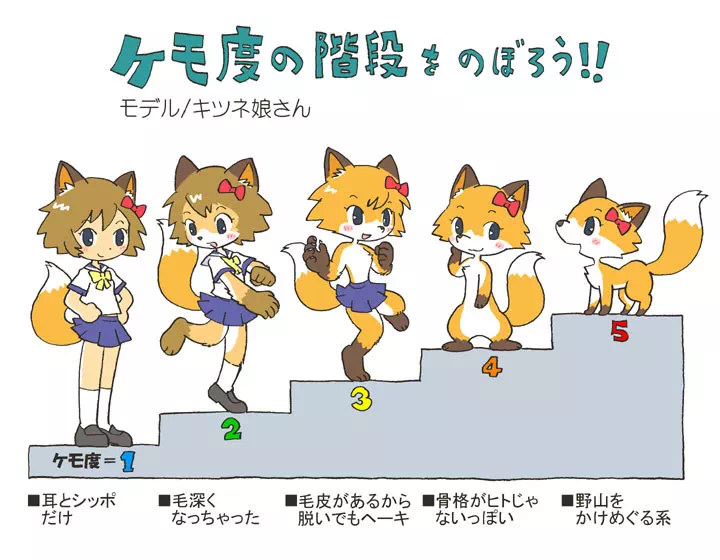furry
Anthropomorphic animals. Body fur, feathers, or scales are common. Characters that have only tails or ears are not considered furry, use kemonomimi mode instead.
"Kemono" is the Japanese equivalent of the term "furry", with fans of such being called "kemona" or "kemoner". Just like with furries in the west, there are numerous subcategories and subcultures within.
Monster girls or kemonomimi with a human face do not qualify for the furry tag (see post #113417 for more information).
Furry scale
Furry-centric series
- Aggressive Retsuko
- Beastars
- Blacksad
- Brand New Animal
- Cat Busters
- Kung Fu Panda
- Odd Taxi
- Sly Cooper (series)
- Sonic series
- Star Fox
- ThunderCats
- Zootopia
Examples
- Aak, Hung and Waai Fu from Arknights
- The Baron from Mimi wo Sumaseba and Neko no Ongaeshi
- Elza from Ishuzoku Reviewers
- Fox McCloud from Star Fox
- Freya Crescent from Final Fantasy IX
- Komamura Sajin from Bleach
- Nanachi from Made in Abyss
- Polt from Monster Musume no Iru Nichijou
- Isabelle from Animal Crossing
- Robin Hood from Disney's Robin Hood
- Sonic the Hedgehog from the Sonic series
- Toriel from Undertale
Related tags
- furrification
- furry and animal
- furry female
- furry male
- chibikemo
- furry with furry
- furry with non-furry
- digitigrade
- fewer digits
External links
The following tags are aliased to this tag: anthro and kemono (learn more).
The following tags implicate this tag: furrification, furry_female, furry_male, furry_with_furry, and furry_with_non-furry (learn more).
拟人动物。身体毛皮,羽毛或鳞片很常见。只有尾巴或耳朵的字符不被视为毛茸茸,而是使用kemonomimi模式。
“ kemono”是日本的“毛茸茸”一词,被称为“ kemona”或“ kemoner”的粉丝。就像西方的毛茸茸一样,其中有许多子类别和亚文化。
具有人脸的怪物女孩或Kemonomimi没有资格获得毛茸茸的标签(有关更多信息,请参见#113417)。
以下标签暗示了此标签:furrification,furry_female,furry_male,furry_with_furry和furry_with_non-furry(了解更多)。
“ kemono”是日本的“毛茸茸”一词,被称为“ kemona”或“ kemoner”的粉丝。就像西方的毛茸茸一样,其中有许多子类别和亚文化。
具有人脸的怪物女孩或Kemonomimi没有资格获得毛茸茸的标签(有关更多信息,请参见#113417)。
以下标签暗示了此标签:furrification,furry_female,furry_male,furry_with_furry和furry_with_non-furry(了解更多)。
